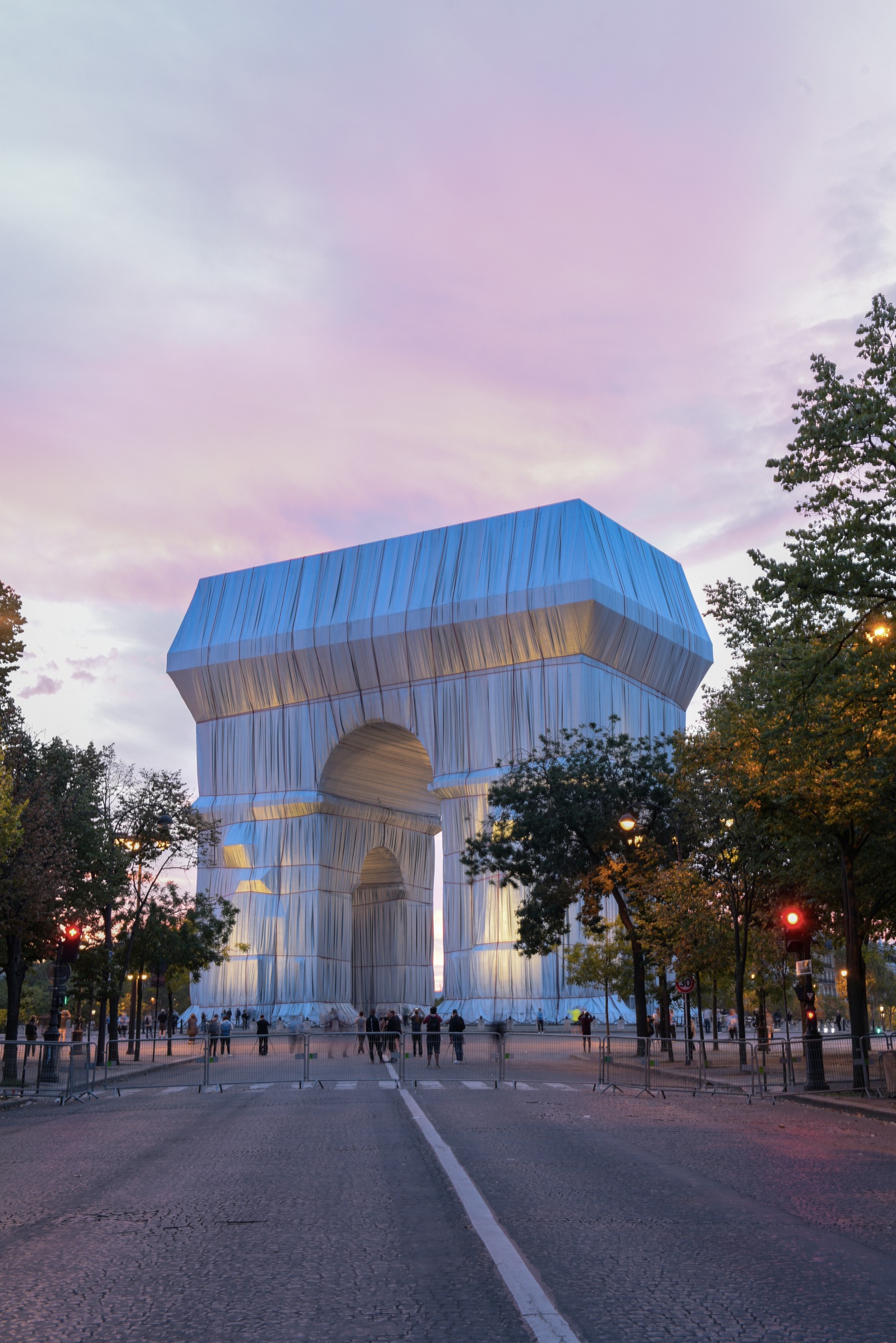They carried out their bold installations decades ago. They meticulously chose the places they would transform. The artist duo Christo and Jeanne-Claude showed art in a large format. One of the last installations they created was realised after their death. In 2021, a special fabric covered the Arc de Triomphe in Paris.
Christo Vladimir Javacheff was born in Bulgaria in 1935. He emigrated to Austria in the 1950s, where he gained artistic freedom. He took up painting portraits. This was his main means of livelihood. During his stay in Paris, he met his wife. Jeanne-Claude Denat de Guillebon was also born in Casablanca in 1935. They married in the late 1950s.
During their lives, they realised more than 20 major art installations. They interacted with buildings but also with nature. Their actions were aimed at highlighting the features of a particular place or object. More often than not, they wrapped selected objects in fabric, initially small ones like a motorbike or a car, through large trees to entire buildings.
One of the most famous was the ‘Surrounded Island’ project carried out in Florida. In this project, eleven artificial islands in Biscayne Bay were surrounded by pink fabric. The area of the fabric used was more than 600 square metres. They succeeded in creating the effect of ‘pink bodies of water’, in the middle of which the islands ‘floated’. The installation had a positive effect. The artificial islands, which were surrounded by fabric, had previously been used to store rubbish. Thanks to the whole event, the area was cleaned up and 40 tonnes of waste were fished out of the water.

They ‘dressed’ many of the world’s famous buildings in new clothes. Their art aroused interest; after all, it was not hidden away in an art gallery, but could be seen by anyone, resident or tourist. Amongst others, they wrapped the Museum of Modern Art in Chicago, the Pont Neuf bridge in Paris or Berlin’s Reichstag with fabrics. They covered the latter with cloth in 1995.
However, creating art was not always easy. This is because they did not always receive permission for such bold actions from the manager of the building in question. The Reichstag is a case in point. They only received permission to obscure it after more than 20 years of effort.
All the fabrics they used to create the installations were later recycled, so none of the projects were ever repeated. When they created there was no social media yet. Who knows what kind of reach and fame they would have had working today?
source: Christo and Jeanne-Claude Foundation(www.christojeanneclaude.net)
Read also: Art | Culture | City | Interesting facts | whiteMAD on Instagram






































